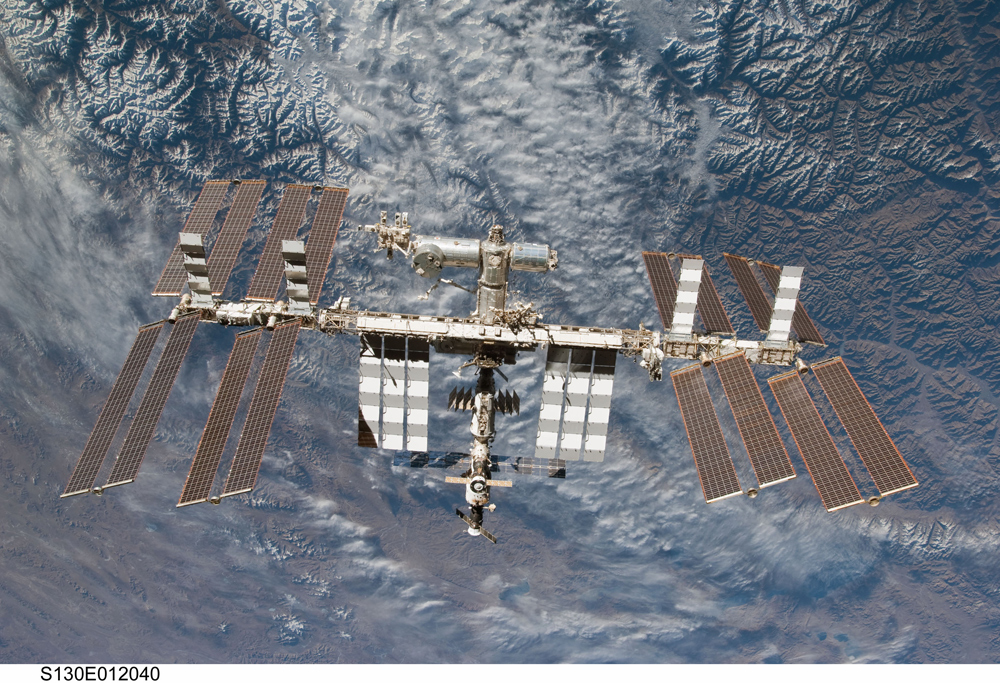Will Space Station Plunge Into Ocean Grave in 2020?

Russian space officials announced their intentions to plunge the International Space Station into the ocean at the end of its operational life in 2020 as a way to avoid perpetuating the problem of space junk in orbit, according to news reports.
The comments were issued today (July 27) by Vitaly Davydov, the deputy head of Russia's Federal Space Agency, or Roscosmos, the news agency AFP reported.
"After it completes its existence, we will be forced to sink the [International Space Station]," Davydov said, according to AFP. "It cannot be left in orbit, it's too complex, too heavy an object, it can leave behind lots of rubbish."
But it seems that the space station's 2020 end is not completely final. While Russia and its international partners have agreed to keep the space station running through at least 2020, preliminary talks between the partner space agencies have examined the possibility of further extending the life of the outpost.
"[T]he heads of the International Space Station agencies from Canada, Europe, Japan, Russia and the United States met in Tokyo, Japan, on March 11, 2010 to review station cooperation and agreed there are no identified technical constraints to continuing the station operations to at least 2020," NASA spokesman Kelly Humphries told SPACE.com in an email interview. "The partnership is currently working to certify on-orbit elements through 2028. We will continue the technical evaluation and discussions with our international partners."
Humphries confirmed that there is a plan to "safely deorbit the station over the ocean when it reaches the end of its life." [Infographic: The International Space Station Inside and Out]
The $100 billion International Space Station took 13 years to assemble in orbit, and represents the efforts of five space agencies representing 15 countries. Construction of the complex began in 1998 and NASA and its partners are now shifting their focus more to utilization of the laboratory for science and technology research.
Breaking space news, the latest updates on rocket launches, skywatching events and more!
The orbital outpost, which flies about 220 miles (354 kilometers) above Earth, consists of 13 rooms and is typically home to a six-person crew. The space station weighs nearly 1 million pounds, which is roughly equivalent to 320 cars.
Plunging the station into the ocean would avoid further cluttering low-Earth orbit, where space junk already presents a growing problem for spacecraft and satellites. Last month, a piece of space debris flew uncomfortably close to the space station, requiring its six residents onboard to take shelter in their Soyuz spacecraft.
NASA and its partners have well-defined methods for tracking space junk, as well as safety procedures for the space station to avoid any collisions.
The Russian space station Mir, a predecessor to the International Space Station, also met a watery demise in 2001. At the end of its 15 years of operation, Mir plummeted through Earth's atmosphere and splashed into the Pacific Ocean.
Disposal of the Mir space station in the Pacific Ocean was planned, much like the International Space Station's eventual demise. NASA also discarded its first orbiting laboratory in similar fashion, but not all of the station's parts landed in the water. The 77-ton Skylab plunged through Earth's atmosphere and rained debris over the Southeastern Indian Ocean and parts of Western Australia. Planners for the International Space Station's final disposal ultimately want to ensure that this does not happen again.
You can follow SPACE.com Staff Writer Denise Chow on Twitter @denisechow. Follow SPACE.com for the latest in space science and exploration news on Twitter @Spacedotcom and on Facebook.
Join our Space Forums to keep talking space on the latest missions, night sky and more! And if you have a news tip, correction or comment, let us know at: community@space.com.

Denise Chow is a former Space.com staff writer who then worked as assistant managing editor at Live Science before moving to NBC News as a science reporter, where she focuses on general science and climate change. She spent two years with Space.com, writing about rocket launches and covering NASA's final three space shuttle missions, before joining the Live Science team in 2013. A Canadian transplant, Denise has a bachelor's degree from the University of Toronto, and a master's degree in journalism from New York University. At NBC News, Denise covers general science and climate change.
